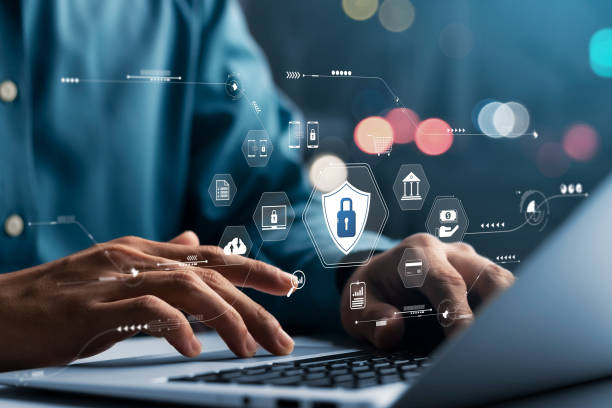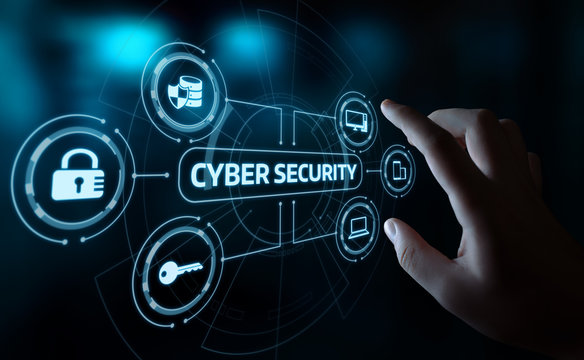
In a world that’s becoming more connected every day, cybersecurity has never been more important. As we enter 2025 and beyond, technology continues to evolve, presenting new opportunities but also new risks. So, what’s on the horizon for cybersecurity, and how can businesses and individuals protect themselves from increasingly sophisticated threats?
In this blog, we’ll explore the latest trends in cybersecurity, answer the burning question, Does cybersecurity involve hacking?, and highlight how to measure anything in cybersecurity to ensure you’re staying ahead in this fast-moving field. cybersecurity concept Global network security technology, business people protect personal information. Encryption with a padlock icon on the virtual interface.

What Cybersecurity is All About
First things first, let’s take a step back and define what cybersecurity is all about. Cybersecurity refers to the practice of protecting systems, networks, and programs from digital attacks, theft, and damage. With the increasing reliance on the internet and digital tools, cybersecurity is now crucial for safeguarding sensitive information from cybercriminals.
At its core, cybersecurity is designed to defend against threats like malware, ransomware, phishing attacks, and much more. It’s not just about installing antivirus software or firewalls; it’s a comprehensive effort involving risk management, threat intelligence, and incident response.
Cybersecurity Trends to Watch for in 2025 and Beyond
As artificial intelligence (AI) continues to grow, it will play a significant role in cybersecurity. AI systems are getting better at detecting threats in real-time, predicting attacks, and automating responses. By leveraging machine learning algorithms, cybersecurity systems can now analyze vast amounts of data faster and more accurately than ever before, allowing organizations to stay one step ahead of cybercriminals.
Why it matters: AI can improve threat detection, reduce false positives, and help businesses proactively defend against attacks instead of just reacting to them.
Ransomware attacks have been on the rise, and they’re expected to become even more sophisticated in the years ahead. Cybercriminals are increasingly targeting critical infrastructure, large organizations, and even municipalities with ransomware that locks down systems and demands payment to restore access. In 2025, we’ll see more advanced forms of cyber extortion, with attackers using AI to automate and scale these attacks.
Why it matters: Organizations need to invest in robust security systems and proactive measures like regular backups and employee training to avoid falling victim to these devastating attacks.
The traditional approach of relying on perimeter-based security (firewalls, VPNs, etc.) is becoming outdated. Enter the Zero Trust security model, which assumes that every user, device, and network inside or outside the organization is a potential threat. This model requires continuous verification, even for internal users, ensuring that only authorized individuals have access to sensitive data and systems.
Why it matters: As cyber threats become more sophisticated, adopting a Zero Trust model ensures that access is granted only when users can be fully authenticated, reducing the risk of data breaches.
Identity and Access Management (IAM) will continue to be a critical part of any cybersecurity strategy. As organizations adopt cloud-based services, remote work becomes more common, and more personal devices are used, the management of digital identities is more challenging than ever.
Why it matters: Improving IAM systems will help organizations ensure that only authorized individuals can access sensitive data, reducing the likelihood of insider threats or data breaches.
The Internet of Things (IoT) is expanding rapidly, and this brings significant cybersecurity challenges. As more devices connect to the internet, each one becomes a potential entry point for attackers. Securing IoT devices is a growing concern, especially as they’re used in critical sectors like healthcare, finance, and manufacturing.
Why it matters: As the number of connected devices increases, robust security measures for IoT will become a key focus for organizations looking to mitigate vulnerabilities.
Cloud computing is becoming the backbone of many businesses. With more companies storing data in the cloud, securing that data becomes a top priority. Cloud security will continue to be a significant trend, as organizations seek to protect their cloud-based infrastructure from cyber threats, especially given the rise of data breaches and misconfigurations.
Why it matters: As companies move more of their operations to the cloud, ensuring cloud security will be a major part of safeguarding against data theft and other cyber risks.
A common question that arises is, does cybersecurity involve hacking? The answer is yes, but with a twist. In the world of cybersecurity, ethical hacking, often called penetration testing, is a common practice. Ethical hackers, also known as “white hats,” use the same techniques as cybercriminals to identify vulnerabilities and weaknesses in a system before malicious hackers can exploit them.
These professionals simulate hacking attacks in a controlled and legal environment to find potential security flaws, helping organizations strengthen their defenses. So while hacking itself is often associated with criminal activities, ethical hacking plays a vital role in cybersecurity by preventing real cyber-attacks.

With the rapid growth of cyber threats, it’s essential to measure the effectiveness of cybersecurity strategies. So, how to measure anything in cybersecurity?
1. Risk Assessment: Conduct regular risk assessments to evaluate vulnerabilities, threats, and impacts on your systems.
2. Incident Response Time: Measure how quickly your team can identify and respond to security incidents.
3. Vulnerability Management: Track the number of vulnerabilities discovered, patched, or mitigated over time.
4. User Awareness: Assess how well your employees understand cybersecurity protocols through regular training and tests.
5. Compliance Metrics: Ensure that your organization is meeting industry standards and regulatory requirements.
By consistently tracking these factors, you can ensure that your cybersecurity strategies are effective and evolving in line with new trends.
Preparing for the Future of Cybersecurity
As we move further into 2025 and beyond, the cybersecurity landscape will continue to evolve at a rapid pace. From AI-driven defense mechanisms to the rise of Zero Trust models, staying ahead of emerging threats is crucial. Organizations must adapt to new trends and technologies, and individuals should take proactive steps to protect their data and digital lives.
Remember, cybersecurity isn’t just about defending against hackers—it’s about continuously adapting and evolving in the face of an ever-changing digital world. Stay informed, stay prepared, and most importantly, stay secure!
Think about your favorite movie plot where the bad guys kidnap someone for ransom – but in the digital world, this happens every single day. Ransomware is a malicious attack where hackers lock up your data and demand a payment (often in cryptocurrency) to get it back. Sounds like a movie, right? Unfortunately, this is very real, and by 2025, ransomware is going to get even scarier. We’re talking AI-driven ransomware that’s faster and more efficient than ever.
The hackers won’t just encrypt your files; they’ll threaten to expose your personal data unless you pay up. It’s cyber-extortion at its finest.
Why it matters: One wrong click could have you in a digital hostage situation. Make sure your backups are on point, and your security is tighter than a drum.